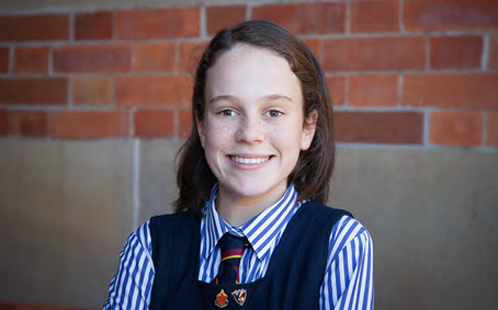Carlo’s Story

By Eleanor Boxall, St Catherine’s School, Waverley
I once met a man named Carlo. He was an ordinary man, but nevertheless, he was a man with a story. In life we have to listen to ordinary men with stories. So here is Carlo’s.
Carlo was an office worker, nine to five. One day on his way home from work he met a girl. This girl was somewhat special; at least she was to Carlo. They dated, they fell in love, and they got married. It was then that Carlo’s wife, Susie, got sick. It started off with Susie’s headaches that turned into migraines that turned into trips to the hospital. Susie was dying. But in sickness and in health, Carlo loved. With a tube down her throat, Carlo loved. But, love nowadays is expensive. Carlo’s pension, his life’s earnings, went towards Susie. It was the least he could give to a girl that made his ordinary life extraordinary. When Susie passed away, Carlo was left with an empty heart and an empty wallet. With no family to support him and a boss that wouldn’t take him back after the amount of time he took off, Carlo found a home on a bench in a park. And then an underpass in a train station.
Carlo is one of the 100 000 homeless people in Australia. He is classified as part of the 6% that sleep rough because of “relationship or family breakdown.”
When I first saw Carlo I grabbed my mum’s hand, I felt nervous. My pulse quickened. His smell. His bloodshot eyes. His densely matted hair. Another drug addict I thought, another alcoholic. Wasting his life away in search of a fix or the next drink. I pitied the man. How was I to know the reason he was there was because of his wife’s death? How was I to know that he was just an ordinary man with a story?
Whenever we hear the word homeless, let’s be honest, an immediate picture comes to mind, and maybe the one I just described. A dirty man, cross-legged on cardboard on the pavement. They don’t have names, they’re just one of the 100 000. A sob story, not a special story.
Australia’s homeless population has increased by 17% since 2009. We cannot deny there is a problem, but the question is how do we solve it? I may be just a 14 year old girl living in a “safe, leafy suburb” who cannot even imagine being in their situation; but to put an end to the ever increasing homeless population, I believe we can and should do two simple things.
First we need to understand why they are in this situation. Are they afraid of what lies at home? Are they struggling with an addiction? Do they suffer from a mental illness? The only way to allow this to happen is for the government to focus their funding on increasing the number of trained counsellors that are accessible to the wider homeless community. By listening to their stories, by knowing their names, we can turn a number into a person and break down the stigma and stereotype that surrounds the homeless.
Second, and perhaps more fundamentally, next time when you think homeless, don’t think a man on the pavement, think of Carlo. Think of the many Carlos, with many stories. And then, I want you to do one last thing. Think how close you could be to Carlo’s story.
Mobile options:




